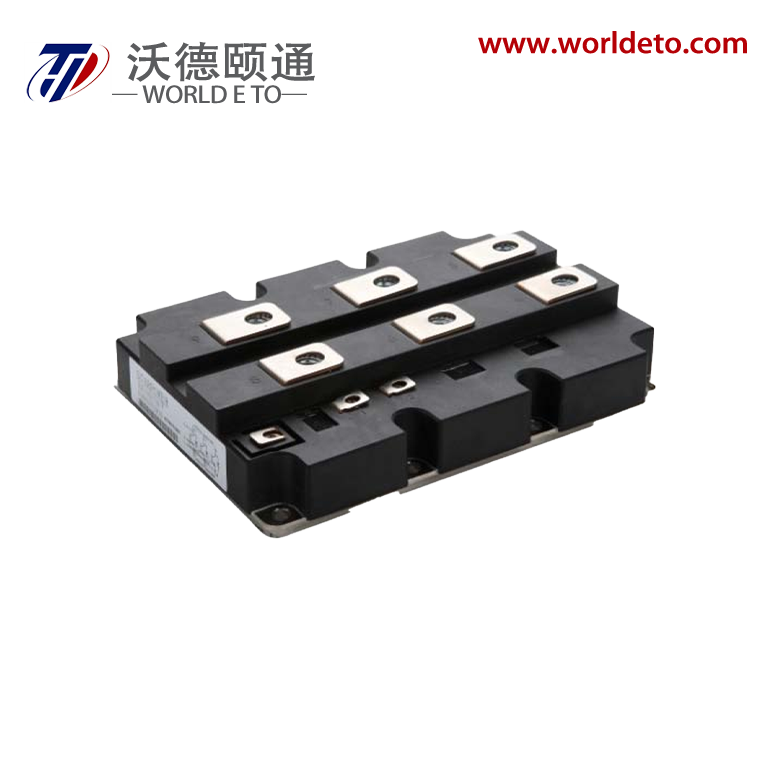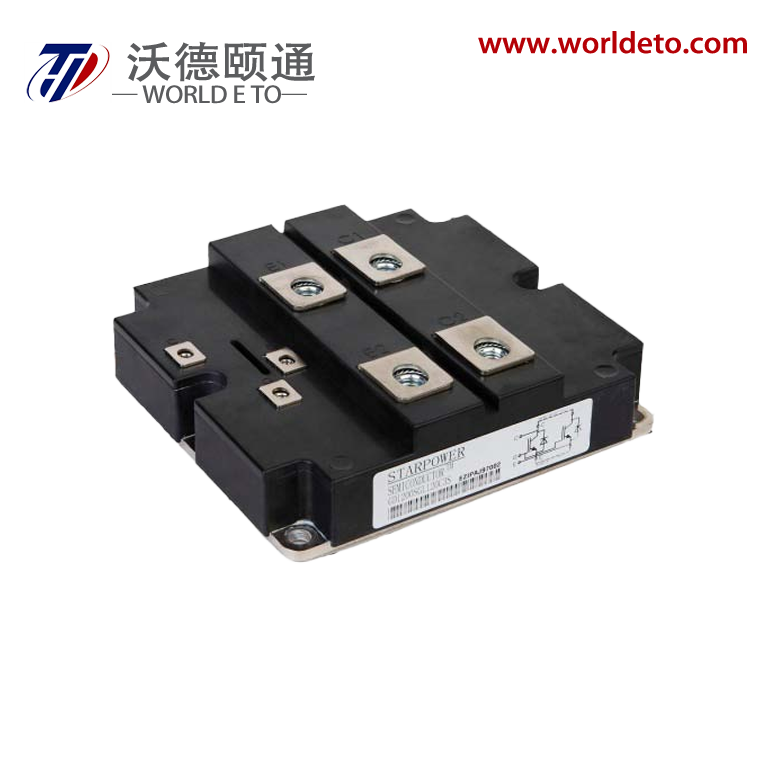Vanliga felmoder i IGBT-moduler
Varmstress och överhettning
IGBT-moduler lider ofta av termisk stress eftersom de fungerar i miljöer där temperaturen ofta överskrider de nivåer de är konstruerade för. När detta sker börjar värmen bryta ner materialen i dessa moduler, särskilt kiselkomponenterna och metallanslutningarna, vilket i slutändan kan leda till systemfel. För att förhindra dessa problem krävs regelbundna kontroller av övergångstemperaturer och korrekt installation av kylkroppar eller andra kylsystem. Många tillverkare har upptäckt att att införa dessa övervakningsrutiner minskar riskerna för överhettning avsevärt och faktiskt fördubblar IGBT-modulernas livslängd i praktiska tillämpningar. Rätt termisk hantering handlar inte bara om att undvika driftstörningar – det spar också pengar på utbyteskostnader och driftstopp i längden.
Spänningstoppar och överspänningsförhållanden
Spänningstoppar kommer ofta från induktiva laster och kan gå långt bortom vad en IGBT-modul har en klassificering för, vilket utsätter den för ett verkligt risk att helt slå fel. När detta sker skadar den plötsliga spikningen den isolerande oxidlagret i IGBT:en, och det påverkar utan tvekan hur bra den fungerar på lång sikt. Det bästa sättet att skydda dessa moduler från sådan elektrisk stress? Tändkretsar gör underverk här, tillsammans med att följa goda designriktlinjer under installationen. Genom att implementera dessa skyddsåtgärder skyddas IGBT:erna från dessa oförutsägbara spänningshopp, så att de kan fortsätta fungera tillförlitligt utan några överraskningar i framtiden.
Tillverkningsfel och materialutmattning
När det gäller IGBT-moduler påverkar tillverkningsfel som svag förbindelse mellan komponenter eller problem med kapsling den långsiktiga tillförlitligheten negativt. Materialutmattning är ett annat stort problem som utvecklas gradvis genom upprepade cykler av belastning och avlastning, ofta orsakar haverier precis där de minst förväntas i modulens struktur. Strikta kvalitetskontroller under hela tillverkningsprocessen tillsammans med råvaror av högre kvalitet kan förhindra de flesta av dessa problem. Branschen har sett imponerande förbättringar nyligen genom att ägna större uppmärksamhet åt dessa detaljer, vilket inte bara gör att modulerna håller längre utan också hjälper dem att prestera konsekvent under svåra driftsförhållanden som annars skulle orsaka tidigare haverier.
Nya tecken på IGBT-modulens fel som ska övervakas
Okontrollerat växlingsbeteende och sprängda fusser
När IGBT-moduler börjar uppvisa instabil strömbrytarbeteende brukar detta vanligtvis peka på någon form av problem antingen med grinddrivarelektroniken eller möjligen degraderade grindoxidlagren. Resultatet? Modulerna kan vägra att växla alls när de borde vara aktiva, eller ännu värre, låsas i ett permanent tillstånd vilket kan skada andra komponenter i systemet. Tekniker märker ofta också att säkringar går sönder - upprepade säkringsfel betyder i regel att en alltför hög ström flyter genom modulen, eller kanske till och med att inre kortslutningar börjat uppstå någonstans inuti. Denna typ av problem uppstår inte utan anledning; erfarna ingenjörer letar efter tydliga tecken som t.ex. ovanlig värmeansamling kring vissa delar av modulhuset.
Driften kanske inte startar eller plötsligt stängs av under uppstart.
Utfaserna kan visa en kortslutning till jord eller likströmsbussen.
Säkringar kan fortsätta att brinna även efter utbyte.
Oscilloskopspår kan avslöja oregelbundna switchpulser.
Övervakning av strömvågformar och användning av korrekt dimensionerade säkringar kan hjälpa till att upptäcka och diagnostisera dessa problem i tid, vilket förhindrar ytterligare skador på systemet.
Överdrivna värmesamling under drift
Överdrivna värmeuppbyggnad under IGBT-modulens drift kan leda till termisk oåterkallelighet, en självförstärkande cykel med stigande temperaturer som snabbt kan leda till fel. Denna situation blir kritisk när en modul börjar arbeta betydligt hetare än andra. Varningstecken på termisk stress inkluderar:
Kylflänsarna känns heta vid beröring, även vid lätta belastningar.
Temperatursensorer som löser ut för tidigt, vilket orsakar omedelbara avstängningar.
Intilliggande komponenter som visar tecken på överhettning eller färgförändring.
Lämplig termisk hantering och effektiva kylningstekniker, såsom användning av avancerade värmeledare eller fläktsystem, kan minska den termiska belastningen på IGBT:erna, förlänga deras livslängd och upprätthålla prestanda.

Obalanserad motorutgång i servoförstärkare
En obalanserad utgång i servoförstärkare kan leda till vibrationer och ineffektivitet, vilket antyder en potentiell felaktighet i IGBT-modulen. Detta problem yttrar sig som ryckiga motorrörelser och skillnader mellan förväntad och faktisk motoroutput. Symtomen på en obalanserad utgång kan inkludera:
Motorn hackar eller vibrerar under belastning.
Förvrängda utgångsvågformer eller förlust av symmetri.
Motorns varv som inte överensstämmer med den kommanderade hastigheten.
Regelbunden prestandamonitorering kan hjälpa till att identifiera dessa ojämnheter tidigt, vilket möjliggör tidig underhåll. Avancerade diagnostiverktyg kan snabbt identifiera rotorsakerna till sådana problem och därmed bidra till att upprätthålla optimal servodriftsprestanda.
Synliga fysiska skadetecken
När IGBT-moduler visar synliga tecken på skador betyder det vanligtvis att problem är på väg. Att kontrollera saker som brännskador, ovanliga färgförändringar eller sprickor i höljet bör vara en del av rutinmässig underhållsinspektion. Titta noga på de punkter där kollektor och emitter är anslutna, eftersom brännpunkter ofta dyker upp där först. Svullna höljen eller kretskort som visar färgförändringar är också varningsflagg. Brända spår på kretskort pekar på allvarliga problem inuti, troligen orsakade av spänningsstötar eller värmeupbyggnad över tid. Att kombinera rutinmässiga visuella kontroller med några grundläggande elektroniktester hjälper till att upptäcka dessa problem innan de blir större fel. Att hålla koll på vad som upptäcks under inspektionerna skapar en användbar historik som gör det lättare att förutsäga när komponenter behöver bytas ut i framtiden. En sådan proaktiv strategi gör att system kan fortsätta att fungera smidigt och minskar risken för oväntade sammanbrott.
Förebyggande strategier för IGBT-modulens livslängd
Optimerad termisk hantering i effektmoduler
Att fånga termisk hantering rätt gör all skillnad när det gäller att minska termisk stress och få IGBT-modulerna att hålla längre. När material av god kvalitet för termisk anslutning används sprids värmen mycket bättre, så risken för att saker blir för heta minskar. Att regelbundet kontrollera temperaturerna hjälper till att upptäcka problem innan de blir stora bekymmer. De flesta ingenjörer känner till detta från erfarenhet. Dessa kontroller upptäcker situationer där värme kan byggas upp oväntat, vilket ger teknikerna tid att åtgärda orsaken innan något faktiskt går sönder. En sådan här förebyggande strategi gör att IGBT:arna kan fungera i åratal istället för månader och samtidigt upprätthåller hela systemets effektivitet dag efter dag.
Överspänningsskydd för nödströmsystem
För att skydda IGBT-moduler i nödströmsystem krävs korrekt installation av överspänningsskyddsanordningar. Dessa skyddskomponenter fungerar som barriärer mot spikar i spänning som annars kan orsaka allvarliga skador på känsliga elektronikdelar. När överspänningsskydd är korrekt integrerat i systemets design säkerställs en tillförlitlig drift under perioder med hög belastning och håller hela strömförsörjningen stabil just när det behövs allra mest. Regelmässig kontroll och testning av dessa skyddselement bör också ingå i alla underhållsplaner. I slutändan, vad hjälper det att ha överspänningsskydd om det slutar fungera efter flera års användning? Testning bekräftar fortsatt effektivitet och förebygger dyra och oönskade driftavbrott, särskilt i verkliga nödsituationer.
Precisionssvetsningsmetoder inom tillverkning
Att få precisionen rätt med svetsning spelar stor roll när det gäller att tillverka robusta IGBT-moduler som klarar materialutmattning över tid. När tillverkare använder bättre svetsmetoder skapar de starkare förbindelser mellan komponenterna, vilket gör att dessa moduler håller längre och fungerar bättre i allmänhet. Färre sammanbrott innebär mindre tid som läggs på reparationer under drift och färre kunder som återkommer med garantiärenden. Även om det givetvis finns en kostnad för kvalitetsillverkning från början, finner de flesta företag att det lönar sig på sikt pRODUKTER att investera i kvalitet. Det extra som investeras i början översätts till system som fungerar smidigare och delar som inte behöver bytas ut lika ofta, något som varje företagare uppskattar när den blickar på sin ekonomi.
GD75FFX170C6SA: En Robust Lösning för Hög-effekt Applikationer
Trench IGBT-teknologi för Minskad Termisk Belastning
GD75FFX170C6SA använder trench-IGBT-teknik som hjälper till att minska termisk stress i de högeffektsenheter vi alla känner till och uppskattar. Det som sker här är att elektroner kan röra sig mer fritt, vilket gör termisk hantering mycket mer effektiv. När värme sprids ordentligt inuti modulen hålls saker i sin optimala temperaturzon nästan hela tiden. Tester visar ganska tydligt att dessa trench-IGBT:er, inklusive vår vän GD75FFX170C6SA, tenderar att hålla längre när de används hårt, särskilt där värmehantering är som mest kritisk, såsom i precisionsvagningsutrustning eller servostyrningssystem. Den förbättrade effektiviteten innebär naturligtvis längre livslängd för enheten, men det finns också ytterligare en fördel - drift körs smidigare och snabbare dag efter dag utan att bryta svett.
10µs Kortslutningsskydd
GD75FFX170C6SA kännetecknas av sitt sofistikerade kortslutningsskyddssystem som reagerar otroligt snabbt – exakt 10 mikrosekunder. En så snabb reaktion gör all skillnad när fel uppstår, minskar skadorna avsevärt och förbättrar hela systemets tillförlitlighet på lång sikt. Verkliga tester visar att felfrekvensen sjunker markant när denna typ av skydd är på plats, och stoppar de irriterande avbrotten innan de ens får uppstå. Dessa snabba reaktioner gör modulen till ett oumbärligt komplement för applikationer där det verkligen spelar roll, såsom reservkraftsystem i sjukhus eller datacenter där avbrott helt enkelt inte kan accepteras.
Högtemperaturmotstånd i krävande miljöer
GD75FFX170C6SA fungerar bra även när temperaturen stiger, vilket innebär att den kan hantera alla slags olika arbetsuppgifter utan att gå sönder. Det som verkligen sticker ut är hur denna komponent kan tåla betydande värme utan att smälta eller slå fel, något som minskar risk för bortfall p.g.a. överhettning och förlänger dess livslängd. Enligt marknadsundersökningar söker företag efter halvledare som inte ger upp när det blir varmt, och denna komponent lever upp till förväntningarna med sin pålitliga prestanda över tid. Vi förutspår att den kommer att användas mycket i miljöer där kylning inte är ett alternativ, tänk på inverterkärnor för industriell utrustning eller andra kraftsystem som arbetar varma men ändå kräver konstant prestanda.

